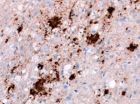(Press-News.org) New research published in Global Heart (the journal of the World Heart Federation) shows that deaths from ischaemic stroke (IS) due to tobacco use in China, India, and Russia together are higher than the total for all the world's other countries combined. The research is by Dr Derrick Bennett, Nuffield Department of Population Health, University of Oxford, UK, and colleagues.
The research looks at the results relating to IS in the global burden of disease (GBD) study published in 2012, but also provides additional analysis on the effects of tobacco consumption, an important modifiable risk factor for IS. In both 1990 and 2010, the top ranked countries for IS deaths that could be attributed to tobacco consumption were China, Russia, and India. Dr Bennett says: "Tobacco control policies that target both smoking initiation and smoking cessation can play an important role in the prevention of IS. In China, Russia, and India, even modest reductions in the number of current smokers could see millions of lives saved due to prevention of IS alone."
Of all the deaths from IS attributed to tobacco consumption in 187 countries included in the GBD 2010 study, in 1990, China accounted for 26%, Russia for 10%, India for 7%, the United States for 5%, and Japan for 4%. In 2010, the countries with the most IS deaths attributable to tobacco were China (29%, 155,332 deaths), Russia (12%, 62 110 deaths), India (11%, 56 670 deaths), while all other countries saw 48.5% of all IS deaths due to smoking (258 084), see figure 2 of full paper). Dr Bennett adds: "Worryingly, the estimated IS deaths attributable to tobacco consumption in China, Russia, and India had increased in the 20-year period. Even though the United States and Japan had improved between 1990 and 2010, they were still ranked sixth and fifth in 2010, with 2.6% and 3.4% of all IS deaths attributable to tobacco consumption." The United Kingdom was in 18th position in 2010, with an estimated 5515 deaths from IS due to tobacco smoking, while Canada in was in 41st position with 1634 deaths and Australia 56th position with 845 deaths.
Dr Bennett underlines the major importance of tobacco smoking as a risk factor for stroke, highlighting a recent study by Peters et al. showing that the risk for IS was around 50% higher in smokers (men and women ) versus non-smokers. He also noted that there is reliable large-scale evidence on the benefits of quitting available in both men and women. He concludes: "Meaningful implementation of the WHO Framework Convention on Tobacco Control (FCTC) is a top priority not only for reducing IS burden but also the burden from other chronic non-communicable diseases."
INFORMATION:
Deaths from ischemic stroke due to tobacco smoking in China, India and Russia more than for all the world's other countries combined
2014-04-04
ELSE PRESS RELEASES FROM THIS DATE:
Intense treatment no better than advice & exercise at reducing pain from chronic whiplash
2014-04-04
Results of a new trial of treatments for chronic whiplash pain, published in The Lancet, suggest that expensive, intense physiotherapy sessions do not show any additional benefit over a single physiotherapy session of education and advice with phone follow-up.
The findings are in line with previous studies on the subject, which have reported minimal additional benefit of longer physiotherapy programmes over briefer physiotherapy programmes for acute whiplash-associated disorders. The current study supports those claims, finding that while intensive physiotherapy has remained ...
What bank voles can teach us about prion disease transmission and neurodegeneration
2014-04-04
When cannibals ate brains of people who died from prion disease, many of them fell ill with the fatal neurodegenerative disease as well. Likewise, when cows were fed protein contaminated with bovine prions, many of them developed mad cow disease. On the other hand, transmission of prions between species, for example from cows, sheep, or deer to humans, is—fortunately—inefficient, and only a small proportion of exposed recipients become sick within their lifetimes.
A study published on April 3rd in PLOS Pathogens takes a close look at one exception to this rule: bank ...
Poor quality of life may contribute to kidney disease patients' health problems
2014-04-04
Washington, DC (April 3, 2014) — Kidney disease patients with poor quality of life are at increased risk of experiencing progression of their disease and of developing heart problems, according to a study appearing in an upcoming issue of the Journal of the American Society of Nephrology (JASN). The findings suggest that quality of life measurements may have important prognostic value in these individuals.
Approximately 60 million people globally have chronic kidney disease (CKD). Quality of life has been well-studied in patients with end-stage kidney disease, but not ...
Walking may help protect kidney patients against heart disease and infections
2014-04-04
Washington, DC (April 3, 2014) — Just a modest amount of exercise may help reduce kidney disease patients' risks of developing heart disease and infections, according to a study appearing in an upcoming issue of the Journal of the American Society of Nephrology (JASN).
Heart disease and infection are major complications and the leading causes of death in patients with chronic kidney disease. It is now well established that immune system dysfunction is involved in both of these pathological processes. Specifically, impaired immune function predisposes to infection, while ...
Insomnia may significantly increase stroke risk
2014-04-03
The risk of stroke may be much higher in people with insomnia compared to those who don't have trouble sleeping, according to new research in the American Heart Association journal Stroke.
The risk also seems to be far greater when insomnia occurs as a young adult compared to those who are older, said researchers who reviewed the randomly-selected health records of more than 21,000 people with insomnia and 64,000 non-insomniacs in Taiwan.
They found:
Insomnia raised the likelihood of subsequent hospitalization for stroke by 54 percent over four years.
The incidence ...
Higher total folate intake may be associated with lower risk of exfoliation glaucoma
2014-04-03
BOSTON (April 4, 2014) — Exfoliation glaucoma (EG), caused by exfoliation syndrome, a condition in which white clumps of fibrillar material form in the eye, is the most common cause of secondary open-angle glaucoma and a leading cause of blindness and visual impairment. Effective strategies for preventing this disease are lacking.
Elevated homocysteine, which may enhance exfoliation material formation, is one possible risk factor that has received significant research attention. Research studies demonstrate that high intake of vitamin B6, vitamin B12 and folate ...
Off the shelf, on the skin: Stick-on electronic patches for health monitoring
2014-04-03
CHAMPAIGN, Ill. — Wearing a fitness tracker on your wrist or clipped to your belt is so 2013.
Engineers at the University of Illinois at Urbana-Champaign and Northwestern University have demonstrated thin, soft stick-on patches that stretch and move with the skin and incorporate commercial, off-the-shelf chip-based electronics for sophisticated wireless health monitoring.
The patches stick to the skin like a temporary tattoo and incorporate a unique microfluidic construction with wires folded like origami to allow the patch to bend and flex without being constrained ...
Geology spans the minute and gigantic, from skeletonized leaves in China to water on mars
2014-04-03
Boulder, Colo., USA – New Geology studies include a mid-Cretaceous greenhouse world; the Vredefort meteoric impact event and the Vredefort dome, South Africa; shallow creeping faults in Italy; a global sink for immense amounts of water on Mars; the Funeral Mountains, USA; insect-mediated skeletonization of fern leaves in China; first-ever tectonic geomorphology study in Bhutan; the Ethiopian Large Igneous Province; the Central Andean Plateau; the Scandinavian Ice Sheet; the India-Asia collision zone; the Snake River Plain; and northeast Brazil.
Highlights are provided ...
Calcium waves help the roots tell the shoots
2014-04-03
MADISON – For Simon Gilroy, sometimes seeing is believing. In this case, it was seeing the wave of calcium sweep root-to-shoot in the plants the University of Wisconsin-Madison professor of botany is studying that made him a believer.
Gilroy and colleagues, in a March 24, 2014 paper in the Proceedings of the National Academy of Sciences, showed what long had been suspected but long had eluded scientists: that calcium is involved in rapid plant cell communication.
It's a finding that has implications for those interested in how plants adapt to and thrive in changing ...
Smoking may dull obese women's ability to taste fat and sugar
2014-04-03
Cigarette smoking among obese women appears to interfere with their ability to taste fats and sweets, a new study shows. Despite craving high-fat, sugary foods, these women were less likely than others to perceive these tastes, which may drive them to consume more calories.
M. Yanina Pepino, PhD, assistant professor of medicine at Washington University School of Medicine in St. Louis, and Julie Mennella, PhD, a biopsychologist at the Monell Center in Philadelphia, where the research was conducted, studied four groups of women ages 21 to 41: obese smokers, obese nonsmokers, ...



